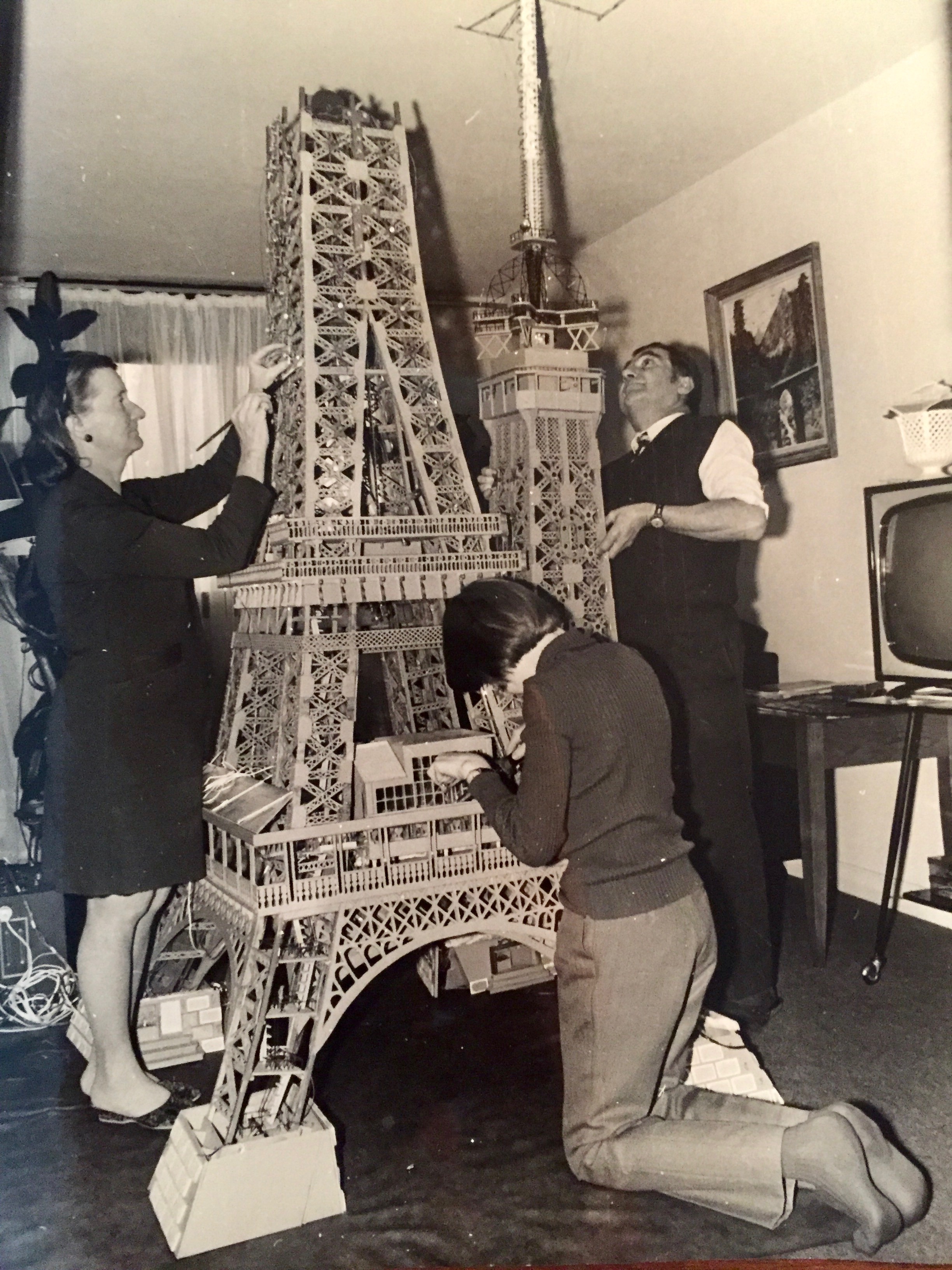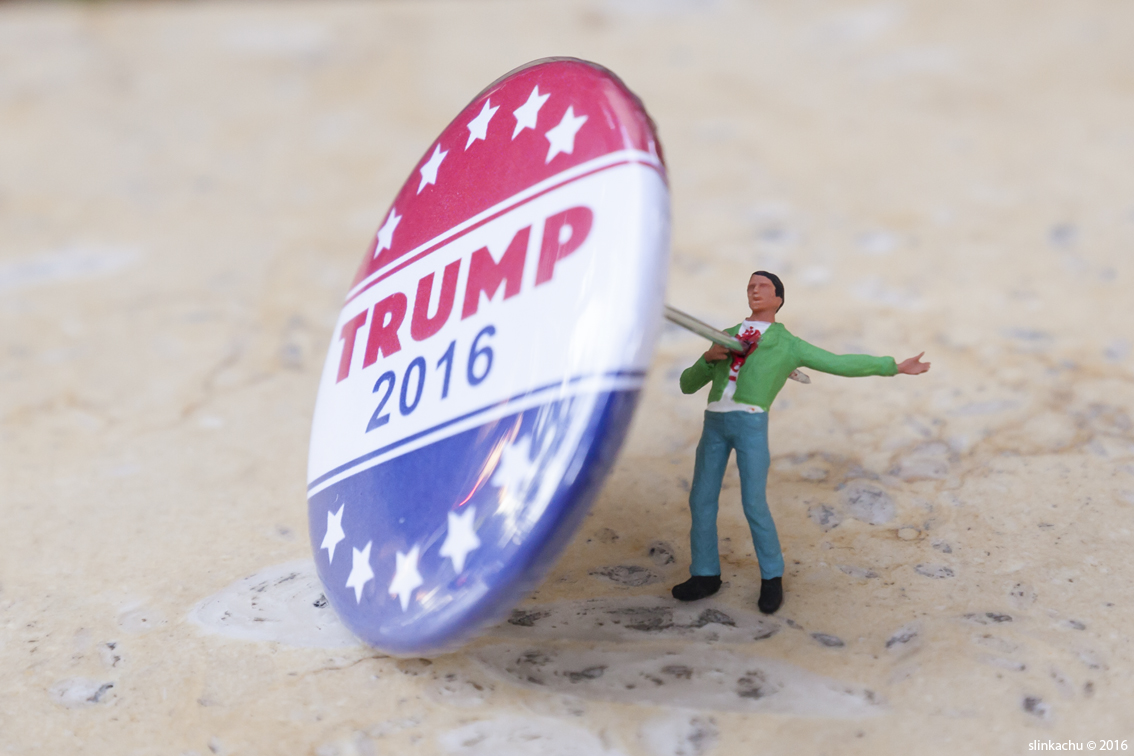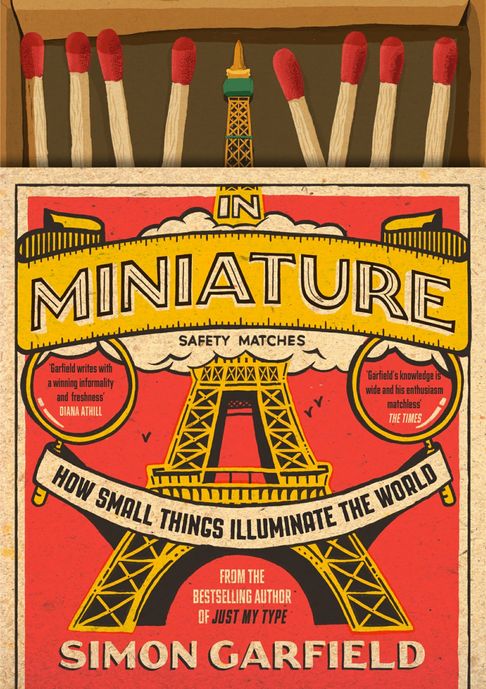In Miniature
In Miniature: How Small Things Illuminate The World
Not so long ago, bigness was the thing. A big pack was better value. The department store had more of everything, as did Texas. Encyclopaedia Britannica had all the knowledge and occupied one-sixth of all available living-room shelving.
Then small was beautiful. The toy poodle. The Mini. The boutique. Nouvelle cuisine. The exclusive club. The stacking chair.
And then, in the age of technology, even smaller was all: the microchip, the microwave oven, the in-ear headphone, 1,000 songs in your pocket, the nanosecond, the slider.
A while after that – which brings us to now – things are confusingly big again. The flat-screen television. The Airbus A380. The intractable size of our global economic and security dilemmas. Dwayne Johnson.
Size is one thing, but scale is another, and my new book In Miniature is about scale. It is specifically concerned with how the miniature world informs the world at large. At its heart it is a book about looking, and about seeing; and with this may come elucidation. We bring things down to size to understand and appreciate them. Something too big to visualise at full scale – a building perhaps, or a war – may be rendered comprehensible at 12:1. Artists – sculptors, set designers, poets – work in miniature because it encourages greater scrutiny and deeper participation, and I hope my new book will do the same.
It’s also a book about pleasure and vision – a celebration. Miniature items help us imagine grander schemes. A signal box on a model railway is eyed with needling precision, and with the care we would seldom apportion to one at full size. Before we landed on the Moon, at least one NASA scientist clung for inspiration, through difficult times, to the marionettes and rockets on the British television series Thunderbirds. Architects of future cities must first scheme in model form, and the model may be the only proof that they attempted such a thing.
Of all the miniature things in the book, not all of them are small. The miniature railway in Hamburg prides itself on being the biggest in the world. The Venetian hotel in Las Vegas, with its fully workable gondola rides for the romantically obtuse, sleeps 4,000. But everything here will be miniature in scale, compared to the thing it’s a miniature of.
An extract from In Miniature by Simon Garfield, read by Adrian Scarborough.
The word ‘miniature’ derives from the world of books, but it was popularised by the world of art. Before the printing press, when books were written by scribes and illustrated by hand, the word evolved from the Italian word miniatura, which itself derived from the Latin miniare, to colour with red lead. There were very few uses of ‘miniature’ before the sixteenth century, when the word became associated with illumination in general, and became frequently interchange- able with ‘limning’ or the painting of small portraits. Thereafter, anything small was referred to as miniature, and the word entered common usage from about 1630. The development of both miniature books and miniature portraits have chapters of their own, and both will confirm that it is only with close scrutiny that we may uncover secrets within.
 To distinguish between the miniature and the merely small I have adopted a simple qualifier: a miniature must be a reduced version of something that was originally bigger, or led to something bigger, and it should be consciously created as such. It may also perform a miniature duty – explain a concept, solve a puzzle, jog a memory. A souvenir of a building on a key ring, though not very interesting, fits the bill. As does a miniature bottle of gin. A Volkswagen Beetle does not, and nor does an ever so small thimble, no matter how keen are those who collect them. Minibars and lapdogs are borderline, as is the art of bonsai cultivation, in which small is created by purposeful pruning and potting. A toy poodle made of plastic in a classroom tableau made by five-year-olds is of no interest to anyone. One could create further rules, and dictate dimensions the way an airline dictates the carry-on, but it will soon become clear that miniatures occupy a significant enough space in our world to create their own instinctual presence: you’ll know one if you see one, and after a while you may see nothing else.
To distinguish between the miniature and the merely small I have adopted a simple qualifier: a miniature must be a reduced version of something that was originally bigger, or led to something bigger, and it should be consciously created as such. It may also perform a miniature duty – explain a concept, solve a puzzle, jog a memory. A souvenir of a building on a key ring, though not very interesting, fits the bill. As does a miniature bottle of gin. A Volkswagen Beetle does not, and nor does an ever so small thimble, no matter how keen are those who collect them. Minibars and lapdogs are borderline, as is the art of bonsai cultivation, in which small is created by purposeful pruning and potting. A toy poodle made of plastic in a classroom tableau made by five-year-olds is of no interest to anyone. One could create further rules, and dictate dimensions the way an airline dictates the carry-on, but it will soon become clear that miniatures occupy a significant enough space in our world to create their own instinctual presence: you’ll know one if you see one, and after a while you may see nothing else.
The miniature world embraces control. The toys we enjoy as children invest us with a rare power at a young age, confer- ring the potency of adults, and possibly giants. Toy cars and dolls and plastic construction kits are not merely pliable in our hands; they render us conquerors. We may never have such dominion over the world again, unless we continue the play into adulthood. Those men with their train driver’s caps and their tiny models in sheds and attics! Their wives long gone! And their wives with their own china madnesses, their little toy families, their smooth hedgehog collections, their treasured things in felt. Who will speak for them? The creation of small universes in which we may bury ourselves to the exclusion of all else will be at the core of this book. The people crouching over tiny details as if the world depended on it are only doing it because their world does depend on it.
The miniature world is more than an artless conglomeration of miniature things; it is instead a vibrant and deeply rooted ecosystem. The psychology of miniaturisation is an intriguing academic discipline, if a miniature one in itself, hinting at an intricate tangle of connections. The essays in this book are conceived similarly.
 The French anthropologist Claude Lévi-Strauss has observed how a miniature may completely reverse the way we comprehend an object: rather than examining it piece- meal and gradually, so that we may slowly derive an understanding of the whole, we see the whole in its entirety and understand it at once – the substitution of what he calls ‘sensible dimensions’ with ‘intelligible dimensions’. This is a humanising force, and it is why we give homey, comical and diminishing names to huge and intrusive structures: those buildings dominating the centre of London nicknamed the Gherkin, Walkie-Talkie and the Cheesegrater – by turns edible and hand-held – are not only fun monikers for us, but also useful for the owners and constructors, transforming what might otherwise be something wholly objectionable and threatening into something instantly friendlier and seemingly smaller.
The French anthropologist Claude Lévi-Strauss has observed how a miniature may completely reverse the way we comprehend an object: rather than examining it piece- meal and gradually, so that we may slowly derive an understanding of the whole, we see the whole in its entirety and understand it at once – the substitution of what he calls ‘sensible dimensions’ with ‘intelligible dimensions’. This is a humanising force, and it is why we give homey, comical and diminishing names to huge and intrusive structures: those buildings dominating the centre of London nicknamed the Gherkin, Walkie-Talkie and the Cheesegrater – by turns edible and hand-held – are not only fun monikers for us, but also useful for the owners and constructors, transforming what might otherwise be something wholly objectionable and threatening into something instantly friendlier and seemingly smaller.
We would struggle to educate ourselves without models. They have been part of the intellectual architecture of museums for more than 200 years, and it is often the spatial encounter with these objects that make a child’s first encounter with a museum memorable. The desire to play with small things becomes a desire to make small things, and both stages address the human need for mastery. We live in a huge and doomy world, and controlling just a tiny scaled-down part of it restores our sense of order and worth. We may not play in the World Cup or the Ryder Cup, but there is always table football and minigolf. What is a drone if not a modern remote-controlled model aeroplane? And what is a globe if not everything we understand about the lay of the land?
I think we may also struggle to educate ourselves without the amateur. The world advances on enthusiasms and ingenuity from the attic and shed (the steam engine, the personal computer), and the miniaturist with the Maplins loyalty card and the early circuit board is almost always an amateur. Until their work is appreciated and valued, they know only private passion and familial disapproval. This book is intended to double our admiration. We should note that the word ‘amateur’ derives from the Latin word amare, to love.
But still: how to explain the model village with a cricket match underway on the village green and the tiny firemen nearby climbing tiny ladders to view the tiny damage to a tiny thatched roof? Who designs and visits these things? What can they tell us about our lives? When Princess Elizabeth stepped among the houses at Bekonscot model village in Buckinghamshire, was she the only visitor that afternoon who believed they ruled the kingdom?
I hardly need add (for you will already have ascertained this from the dimensions of the work) that this is not intended as an encyclopaedia or manual. As well as an introduction to some dedicated people, the book is an attempt to tell the history of a few key events as they’ve been represented in miniature form, and show how the form informs our deeper comprehension. The wider shores of humanity are thus (and often) explored in ways that would be impossible without this reduction in scale.
We should be grateful that the miniature universe is not policed. It is not created by corporation or committee, but by committed individuals. And in this way the miniature aspires to art: at its best, it may offer up the illuminating and profound. At the very least, it may expand our perception of the things the mind already thinks it knows.
The subject matter dictates that my analysis is a microcosm, and perhaps it’s best regarded as a brief history of the model village commonly known as the world. The village is large and welcoming, but it doesn’t contain everything. If you are looking for Sylvanian Families or Dinky cars or the history of Lego you will be disappointed, but if you are in the market for a flea circus, 1,000 tiny Hitlers and the revolving model box used by the set designer of Angels in America, then you’re in fantastic luck.
Almost all the miniature objects under discussion have been made by hand. These days, such objects – a miniature book, an elaborate model train layout, the luminescent portrait on ivory – would be considered part of the maker movement, or perhaps the slow movement. Often they are things out of time – not always nostalgic, but frequently redolent of childhood, or the myth of childhood. And of course we will enter the arena of the obsessive, and wonder if there has ever been a more desirable place to be.
The powerful kingdoms of fantasy and Hollywood lie beyond our village borders, so there is only fleeting reference to Gulliver’s Travels and hardly any space at all for shrinking portal transportations or the movie Downsizing. (A flea circus is included not because it involves fleas – I’m not interested in small things per se, and even less in things created small in the natural world – but because it is a minuscule circus. The fleas try to do things that exist in the human world – they dance a ballet, fight a duel with swords, drive a mail van; they are a wonder to us. The training of circus fleas has its own academic specialism: ‘pulicology’. Reader, try putting this book back on the shelf now . . .)
The significance of the miniature is not new, and neither is it slight, which makes the paucity of writing on its collective value a mystery, at least to me. The desire for the miniature that begins in childhood is usually jettisoned as adulthood approaches, the way the boosters fall off as the rocket streaks towards the Moon: teenagers don’t want toy cars, they want real cars. And if they don’t, they may be considered peculiar, and it is this peculiarity that captivates us. Before I entered the miniature world, I regarded with suspicion the sign on the door of the doll’s house emporium near my home that says ‘this is not a toy shop’. For what else could it be? But when I gathered the courage to enter (the shop is dark, imposing and sits behind mesh grilles, and the owner has a reputation), I found tiny tennis racquets with real stringing, and jars of Marmite so small that even a mouse wouldn’t be satisfied come teatime, and hundreds of other tiny things too familiar to mention. It wasn’t a toy shop, it was a universe. It performed that familiar miniature trick: it had indelible belief in its own existence. And because everything was miniature, nothing looked small. I left the shop believing that the cars outside were juggernauts, and the pillar box was the size of the Guggenheim.
Worlds within worlds existed long before those suggested by Lewis Carroll or quantum physics. The history of the miniature stretches back to the ancients, and its path tracks an irreducible line. Lucretius had it right when he observed, ‘A small thing may give an analogy of great things, and show the tracks of knowledge.’ In her book On Longing, the poet Susan Stewart suggests that we inhabit a daydream in which the world of the miniature may one day reveal a secret life. The daydream maintains an internal logic: as we fall down the rabbit hole, we should instantly forgive anyone who considers the larger everyday world to be the normal one.
The following chapters will, I hope, both celebrate and clarify our fascination with bringing things down to size in order to grasp their essence. Very shortly, Egyptian pharaohs, English abolitionists and Rod Stewart will all have their say, as will a woman from Chicago who believes the only way to solve a crime is to reduce it to its smallest constituent parts. But the story begins on a grand scale 130 years ago in the centre of Paris, where Gustave Eiffel is ascending his tower in a stiff wind, and the excitements of human engineering are changing for all time the way we view the world. And for more on that you’ll have to read the book…

